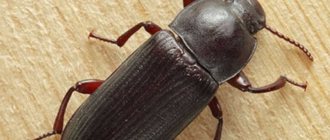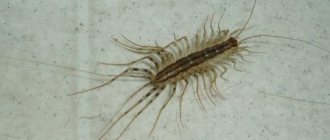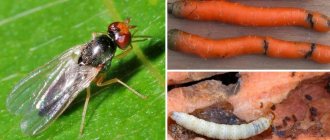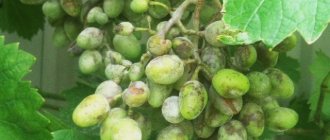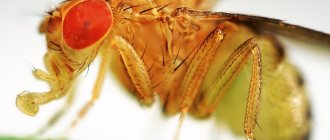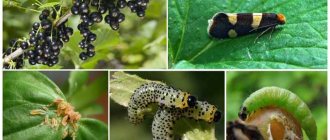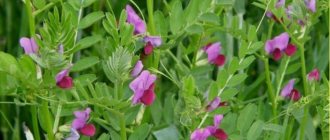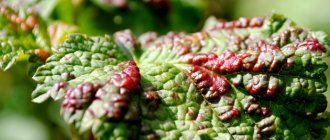How to recognize an insect?
The scale insect is a small insect no more than 5 mm long, covered with a kind of shell. It is difficult to see with the naked eye; the pest is small, motionless, its color matches the bark of trees, it is omnivorous and is a parasitic insect that feeds on plant juices.
Entomologists identify more than 2,000 species of scale insects. The greatest dangers for plum trees are:
- Californian;
- comma-shaped;
- plum.
Insects reproduce by laying eggs, from which larvae subsequently emerge. One female lays more than 100 eggs during her life.
Sex differences in these insects are pronounced. Males are not similar to females and do not cause any harm to orchards. Males resemble midges and have wings. They circle around plants in search of females, without sticking to the leaves and bark of trees.
Females spend their entire lives in trees, lay eggs and feed on plant juices, creating colonies that look like growths on the bark. They have no wings, no legs, no whiskers, and no eyes either.
There are bisexual scale insects; such varieties are more difficult to fight; they are resistant to many types of influences.
Fighting scale insects on plums in the garden
A novice gardener, when studying the “materials”, is horrified by how many enemies he will have to defeat in order to get a good result. Yes, there are a lot of worries, but if everything is done in a timely manner, then the time and financial costs will be minimal, and the goal will be achieved.
The difficulty is that garden pests can camouflage themselves for the time being, and when their presence is detected, only radical measures help, and even then not always. For example, the scale insect on a plum tree successfully deceives experienced gardeners, but even more so creates problems for beginners.
But you can fight it, the main thing is to know the biology of this enemy.
How to recognize scale insects
Scale on a drain - photo of the affected area
There are several thousand species of scale insects, but the most common in our latitudes, including plum orchards:
- comma-like;
- Californian;
- acacia false scale;
- plum false scale;
Regardless of the species, this is one of the most harmful insects, characterized by omnivory. In particular, it attacks plum trees. To effectively fight scale insects, you need to understand its life style.
general description
The scale insect is a sucking insect, inactive or generally motionless, belonging to the family of Hemiptera.
Its distinctive feature compared to other garden pests is the presence of protection on the body in the form of a dense shield that can be easily separated from the body.
This covering may consist of 1-2 larval skins, supplemented by a secretory part. The color of the shield of a living female scale insect is brown, while that of a dead one is dark brown, almost black.
Female scale insect
The female does the most damage - she has neither legs nor eyes. The pear-shaped body is milky white in length and reaches no more than 4 mm. Visually, the colonies of this parasite resemble natural growths on trees or stem lenticels.
Important! Natural companions and enemies of scale insects are 27 species of other insects - lacewings, bugs, mites, ground beetles, syrphid flies, etc.
Imago
For example, let's take the comma-shaped scale insect. Damage to the plum is caused both by the female, who pierces the tree bark and leaf tissue with her proboscis, and by her larva. The insect's saliva contains substances that have a detrimental effect on the cells of the plum tree.
A female scale insect can lay up to 100 eggs during its life cycle. In places where there is a large concentration of female larvae, the internodes dry out, and the young shoots die completely, and very quickly. Productivity is falling. For the winter, adults climb into the folds of the bark.
If you look closely in early spring, you can see the larvae on thin branches, which they begin to devour.
The shield where the eggs were kept
Reproduction
The eggs, which are stored all winter, are laid by the female under the shield and die immediately. They are not afraid of frosts down to -32C. And as soon as the spring air warms up to +8C, the larvae (vagrants) begin to hatch.
Usually this period coincides with the flowering of many garden trees and bushes - plums, apple trees, currants. They are very fussy because they can only survive for 48 hours without food.
This explains their non-stop movement along the trunk in search of a place to obtain food. Having attached themselves, the adults lose mobility and soon the body of the larva is covered with wax-like fluff.
After 2 weeks, molting occurs, and the skins become material for constructing the shield. It takes a month for a sexually mature adult female to form during intensive feeding and after the next molt.
Life cycles of different types of scale insects
Interesting! The number of males from the total population ranges from 18 to 36%. This is the reason for the development of the insect in two forms: parthenogenetic and bisexual. It is in the latter form that the insect is resistant to external influences, spreading to various types of plants.
Preventive measures
- Quarantine. Even at the stage of selecting a seedling that will be brought to the site, the gardener must carefully examine the tree. Unhealthy plants are discarded.
- Young seedlings are already in the garden; if pests are detected, they are subjected to mechanical cleaning. Scale insects are cleared from trunks and branches.
- The area can be populated with natural enemies of scale insects, for example, seven-spotted ladybugs.
- Trees of no value are simply removed from the garden.
Crevices in the bark are an ideal place for scale eggs to overwinter.
Fighting scale insects on plums: folk recipes
If the spread of the pest has not reached critical proportions, then you can try to cure the plants with a detergent-based composition. The recipe could be like this:
- laundry soap (10 g) + water (10 l);
- green soap (50 g) + water (10 l);
- soda ash (10 g) + water (10 l).
Experienced gardeners claim that treatment with such compounds will kill up to 50% of scale insect larvae. For humans, contact with such substances is quite safe, but processing is very labor-intensive and is suitable for trees of small height. Moreover, such procedures do not affect strays hidden in the axils, curled leaves, or recesses of the bark.
Features of application
Before you start treating all the trees in the garden, it is worth testing the selected drug on one plant. If no negative symptoms are noticeable within 24 hours, all plants are sprayed. To destroy the enemy for sure, several treatments with alternating chemicals will be required.
be careful
The use of chemicals named in our article and their analogues, which are sold on the market, have a detrimental effect on both pests and the plants themselves - this is worth remembering first of all. It is taking this factor into account that experts recommend using the same product no more than every 3 years.
Vigilance is a key quality of a successful gardener. Dead bark from both trunks and skeletal branches must be peeled off and burned. Important manipulations are timely feeding and watering - it will be easier for trees infected with the pest to cope with damage from scale insects.
Dear readers, if you have your own recommendations on how to get rid of scale insects on a plum or other tree, please share with us. We will definitely supplement this article with your advice.
Where to submit a tick for analysis
Download the pest control leaflet
Source: https://vreditel-stoi.ru/sad/slivyi/shhitovka-na-slive.html
Reasons for appearance
Weakened plants are most often infected. Factors that can lead to the disease include:
- excess nitrogenous fertilizers;
- lack of lighting, shaded area;
- lack of moisture;
- lack of ventilation and dry air.
Plums should be regularly inspected for signs of disease and pests. The initial stage of the disease is treated quickly and effectively; irreversible changes have not yet occurred on the tree. At this stage, the crop can be saved.
See also
When and how best to transplant a plum to a new place - in autumn or springRead
Damage to plums
Scale insects are parasitic insects that live off the vital forces of the trees on which they settle. Every day the plants begin to lose energy and eventually stop growing.
The damage caused to plums by these insects is enormous:
- The branches of the plums begin to dry out and the leaves stick together.
- The sticky coating created by scale insects serves as a breeding ground for bacteria and fungi.
- Plums shed fruits and buds.
- Tree immunity is reduced.
- The bark becomes cracked.
If you let the situation take its course, the plum will die. Parasites spread quickly to other plants; the entire orchard, including various fruit trees, can be infected. Pest control must begin immediately.
Scale insects on plums: methods of control
Scale insects are small insects whose females and larvae extract nutritious juices from plants. It often affects fruit trees, which negatively affects both the condition of the plantings and the harvest. To avoid this, the gardener must be familiar with methods of combating scale insects on plums.
Brief description of the pest
Scale insects (Latin name – Diaspididae) are a family of insects found throughout the world. They are known as pests of wild, cultivated and ornamental plants, causing great damage to gardening.
Science lists 2,400 species among them, of which the plum, comma-shaped and Californian scale insects most often infect plums.
The latter, despite its foreign name, is widespread in Russia, Ukraine, Moldova and other neighboring countries.
Insects reproduce by laying eggs. Soon larvae emerge from them, and then adults. They are characterized by pronounced sexual dimorphism: females are very different from males both in appearance and in the characteristics of their life:
- The body of females is protected by a hard shell - a rounded shield, reaching a diameter of up to several mm. Its color depends on the species and age of the individual. She has no legs, whiskers, wings or even eyes. The female scale insect spends her entire life in one place, clinging to a plum shoot.
- The male looks completely different: he is a small winged midge with antennae, legs and eyes colored purple-red. The male individual circles around the plants, but does not cause them any harm: only females and larvae feed on plant juices.
- The larvae molt several times, gradually becoming similar to adults. They need nutrients to grow, and they suck them from plum shoots. Starting from the second instar of the larva, the male sex appears divided into a head, chest and wing rudiments. Female individuals become overgrown with a dense shield, and their wings and eyes are also reduced.
Scale insects are visually similar to growths on the bark of a plum tree. They live mainly in colonies consisting of insects that differ in age. Single individuals are extremely rare.
Signs of infection
You can suspect that a plum has been infected by scale insects based on the following signs:
- The appearance of yellow-brown scales on the shoots and leaves of the tree, which are very difficult to remove. They can be either slightly flattened or convex.
- The bark loses its natural shine.
- Formation of frozen juice smudges on plum branches and trunks.
- The leaves stick together.
- The branches of the tree dry up.
- Plant growth slows down or completely stops.
If such signs appear, then you need to thoroughly inspect the plum tree and neighboring plantings in order to assess the criticality of the scale of infection. Based on this, pest control agents are selected.
Basic methods of struggle
The insect has a protective shell, which makes the process of fighting it labor-intensive. If scale insects have managed to multiply, then you cannot do without the use of chemical insecticides.
The plant is sprayed with them in 3-4 procedures until the scale insects are completely destroyed.
When there are very few pests or the crop is ripening, which does not allow the use of toxic substances, then folk or biological remedies can be used.
To make the fight easier or protect your garden from scale insects, you need to keep it in order:
- trim and thin out the crown as necessary;
- clean the trunk of dead particles of bark, moss and lichen;
- cut off infected shoots and burn them;
- remove growth in the root zone.
Each new plant brought to the site must be carefully examined and quarantined. The seedling should not be placed in the garden until it is completely free of pests.
Folk remedies
The fight against scale insects on plums can also be carried out using folk remedies. But such methods will bring the desired result only if there are very few insects. There are no compounds that are poisonous to humans in recipes for treating fruit trees, and their use of folk remedies is safe for health. Here are some of them:
- A simple solution of 10 g of laundry soap shavings in 10 liters of water.
- 50 g of green soap diluted in 10 liters of water.
- 10 g of soda ash per 10 liters of water.
- An infusion of “caustic” plants: garlic, walnut, shag and wormwood.
- Emulsion of machine oil and soap solution. The optimal proportion is 1:10. Can be used once per decade.
Such products are used for spraying plums. Treatments, as when using chemicals, should be carried out at intervals of 7–10 days.
If there are very few scale insects, then the affected area can simply be wiped with a cotton swab or folded gauze soaked in one of the products.
Biological
Biological studies have identified natural enemies of scale insects, which are now used to combat the pest:
- Ladybugs, and especially the reniform and two-spotted chylocorus, reduce the number of scale insects by 50–70% if released into the garden in May. One individual can eat approximately 700 larvae.
- The small parasite Prospaltella perniciosi is also effective against the pest.
- To destroy scale insects, you can use popular biological products containing nematodes or fungi: Aversectin, Avertin and Nemabact.
They do not contain toxic substances, so the crop will be safe after their use. Biological products do not harm the plum itself.
When choosing a method to combat scale insects on drains, it is necessary to correctly assess the scale of the infestation and the real threat. For better results, you can combine chemical, folk and biological drugs with each other. It is important to follow the instructions and not forget about regularity: if you miss one treatment, you will have to start all over again.
Source: https://beetlestop.ru/borba-so-shhitovkoy-na-slive/
External signs of pest damage
Trees attacked by scale insects have a number of signs:
- The bark acquires a characteristic shine.
- The leaves curl, dry out and stick together.
- The plant stops growing.
- The plum begins to shed its fruits and buds.
- On the leaves and stems you can see small brown tubercles that are difficult to clean off the surface.
The choice of pest control methods depends on the number of affected areas.
How to deal with scale insects
The insect is resistant to low temperatures and can withstand frosts down to -35 C. The protective shell protects the scale insect from external influences. The fight against this pest cannot be called easy. If the scale of infection is large, the use of insecticides cannot be avoided. Methods of combating scale insects that have settled on plums depend on the degree of damage to plants.
Chemicals
Insecticides can completely destroy scale insects. But they are used in advanced cases. Do not use chemicals during the fruiting period. Pesticides will get into ripe fruits, which will become unsuitable for food.
Important! A one-time treatment with insecticides is not enough. 3-4 sprayings are carried out with a break of one week.
“Aktara”, “Confidor Extra”, “Aktellik” are proven chemicals against insect pests. Scale insects are capable of developing immunity to drugs, so it is recommended to change them periodically.
Biological drugs
If an insect was noticed on plums during the fruiting period, pesticides cannot be used; biological methods of pest control are used:
- Remove all infected branches and shoots and burn them.
- The root circle is completely cleared of grass, shoots and fallen leaves, 3 cm of soil is removed and the tree is sprinkled with wood ash.
- The formed growths along with moss and pieces of bark are removed from the trunk.
See also
Description of the cherry plum variety July Rose, pollinators, planting and careRead
You can find biological products on store shelves; they are safe for fruits and show good results in pest control:
- "Avertin";
- "Nemabakt";
- "Fitoverm";
- "Aversectin".
The garden is under quarantine. Until the insect is defeated, it is not recommended to plant new fruit trees.
Folk recipes
Traditional methods of combating scale insects are effective only at the initial stage of infection, but they can be used during the period of plum fruiting:
- Dissolve half a piece of laundry soap in 10 liters of water and wipe the bark and leaves with the solution.
- Dilute soda ash in a ratio of 10 g of powder per 10 liters of water, spray the plants with the solution through a spray bottle.
- Onion peels, tobacco and wormwood - infuse fragrant herbs for 24 hours in a bucket of water. The resulting product must be filtered and sprayed on trees affected by scale insects.
Experienced gardeners release insects onto the affected trees that feed on scale insects: ladybugs and ichneumon beetles. This method is perfect for preventing and protecting plants from small pests.
How to get rid of scale insects on a plum and the best methods of control
Scale insects on plum trees appear in the form of a small insect, which is very difficult to notice right away. Gardeners most often discover scale insects in the middle stages of tree infestation. To eliminate the pest, it is necessary to use urgent measures, otherwise the plant may die.
Description and characteristics of the pest
The insect is small in size and light brown in color. Affects tree shoots. It fits tightly to the bark and looks like small compactions.
The insect feeds on sap and can lead to complete withering of the crop in a short time. Females are wingless, males are smaller and have the ability to move.
The pest larvae are located under the bark and can hibernate in winter.
Varieties
Scale insects have different types, which differ in their external characteristics.
comma-like
A small insect, light-colored body. The shell is curved, resembling a comma. It sticks to the trunk and forms small growths. Slowly moves through the crop, sucking out the juice. After laying eggs, the female dies; up to 100 larvae can appear in one clutch. The larvae overwinter in a growth on the shoot and reappear the following season in the form of an adult insect.
Californian
Small pests that attack plums. Externally they look like a small dot. The pest is detected at a late stage. To remove it, you must use chemicals.
Acacia false scale
Occurs on all fruit crops. Externally it has small dimensions up to 6 mm. By sticking to the shoot, it forms a protective shell in which it lays eggs. The insect is brown.
The larvae quickly crawl into healthy areas of the tree, which can lead to its death within a few years.
Plum false scale
The pest has the shape of a hemisphere. The shell is brown in color, sticks to the trunk and infects young shoots. The pest can tolerate low temperatures, so if untreated, it overwinters in the tree bark.
Life cycle
Among pests, most insects are females. After fertilization, the female lays eggs and dies. The eggs are stored in the female's shell throughout the winter. In the spring, larvae emerge from the eggs, mature and crawl throughout the tree. A month after hatching, the larvae develop into an adult female.
Prevention measures
To prevent infection, it is necessary to take certain preventive measures.
Quarantine
Only healthy seedlings are used; infected specimens must be removed.
Mechanical cleaning
At the first symptoms of infection, the affected shoot is pruned. Mechanical cleaning with sharp objects can also be used. The bark containing the pest is removed. This procedure is troublesome, but does not require the use of chemicals.
Important. It is not recommended to use mechanical cleaning on young seedlings.
Natural enemies
For small concentrations of the pest, natural enemies can be used. These are ladybugs that feed on harmful insects.
Removing unnecessary trees
Very often the pest appears on old trees that practically do not produce a crop. Such crops must be removed and replaced with healthy young seedlings.
How to fight
The method of pest control is determined by the gardener depending on the degree of infestation.
Traditional methods
Traditional methods allow you to remove the pest in small quantities. The advantage of such techniques is the absence of harm.
Laundry soap
You can get rid of the pest using laundry soap. To do this, a bar of soap is dissolved in 5 liters of water and the tree is sprayed. The soap solution forms a film, which leads to the death of the insect.
Green soap
To process, you need to grate 50 grams of soap and dissolve in 10 liters of water. The resulting solution is used to treat the wood. After 10 days, the procedure is repeated.
Soda Ash
Soda ash destroys the pest's shell and contributes to the death of not only the adult, but also the eggs. 10 grams of powder must be dissolved in a bucket of water. The resulting composition is sprayed onto the tree.
Onion infusion
To prepare, you need to fill a kilogram of husk with 2 liters of water. Leave for several days. Then strain and dilute with 5 liters of water. The resulting infusion is used to spray the plant.
Fresh crushed pepper
Hot pepper is used. Grind 100 grams of pepper, add a liter of water and bring to a boil. Cool, dilute in 5 liters of water and spray the tree.
Wood ash
Pour a kilogram of ash into a bucket of water and process it. The same result can be achieved if you use dry pollination with ash.
Treatment with horticultural oil
Neem oil helps get rid of the pest. The oil is sprayed onto the plant and forms a film that does not allow air to pass through. As a result, the insect dies.
Chemical methods of control
The use of chemicals allows you to eliminate scale insects from plums in a short time.
Drugs
Among the large number of drugs, it is necessary to highlight frequently used substances.
"Novaction"
Broad-spectrum drug. Designed to combat chewing and sucking insects. The result is noticeable immediately after use. It is produced in the form of an aqueous emulsion from which a working solution is prepared.
"Sumition"
The drug is used to combat harmful insects. Once the scale insect gets on its shell, it is destroyed and the insect is killed.
"Di-68"
Used to prepare solutions against sucking pests. To achieve the result, several treatments are necessary.
"Bi-58 new"
An improved form of the drug that has a quick effect on pests. If the solution gets on the shell, it blocks the ability to move, resulting in the death of the pest.
"Karbofos-500"
A contact-intestinal drug that, when ingested, destroys soft tissue. It is necessary to apply several times, since the substance does not affect eggs.
Allows you to eliminate the pest from the first application. After spraying, protection is developed for several months. Can penetrate the bark and remove scale insect larvae.
"Chlorpyrifos"
The drug is used to remove all types of insects. When it comes into contact with an insect, it paralyzes the pest. Can be used 2 times per season.
"Pirinex"
A contact substance that is used to eliminate scale insects. To obtain a visible result, it is necessary to carry out several sprayings. Does not harm the culture.
"Evrodim"
After application to a tree, the substance quickly penetrates the bark and has a negative effect on pests. The drug is not washed off with water and can be used regardless of weather conditions.
"30 Plus"
The substance has a rapid effect on the pest. Can be used at all stages of infection. Before use, you must prepare a working solution.
Important. It is necessary to follow the instructions, otherwise burns may remain on the shoots and leaves.
"Prophylactic"
The substance is used by early veins to prevent pests. Plum processing is carried out before the buds open.
Rules of application
To obtain results, it is necessary to observe the specifics of using chemicals:
- The chemical is mixed with water according to the instructions.
- The resulting solution is poured into a spray bottle.
- The plant is sprayed in several stages. First treatment when signs of an insect are detected. Repeat procedure after 10 days.
After processing, it is not recommended to consume the fruits for 5 days.
Precautionary measures
When processing plums for scale insects, the following safety precautions must be observed:
- carry out processing in protective clothing;
- safety glasses and a respirator are used;
- after treatment, you must wash your body with soap;
- do not use the drug when children and pets are present;
- During the period of full maturation, the use of chemicals is not recommended.
Following safety practices helps prevent harm to human health.
Tips and tricks from experienced gardeners
In the fight against scale insects, it is necessary to take into account the advice of gardeners who have encountered this problem:
- If the tree is more than 50% infected, it is already problematic to save the crop; it is recommended to prune the damaged areas.
- For frequent infections, one drug can be used for no more than 2 years. After this period has expired, the pest may develop an addiction.
- When removing scale insects, it is necessary to thoroughly water and feed the tree. This will boost immunity and speed up the effect of the drugs.
When planting seedlings, it is necessary to purchase planting material from proven places. This will reduce the chance of infection.
Bottom line
The fight against scale insects on drains does not cause difficulties if treated in a timely manner. However, in advanced cases, the use of insecticides does not bring results. In this case, the plant must be removed. The insect can move onto healthy plants, so if one tree is infected, you need to carefully inspect the rest of the crops in the garden.
- Ask a Question
- Choose a tomato variety
- Choose a variety of cucumbers
- Lunar calendar 2020
Source: https://MoeFermerstvo.ru/sliva/shhitovka
Prevention measures
Any disease is easier to prevent than to treat. This rule applies not only to humans, but also to plants. Prevention methods include:
- Spraying trees in early spring and during flowering with insecticides.
- Removing heavily infected, untreatable specimens from the garden.
- Introduction of quarantine for the period of illness.
- Careful inspection of new seedlings.
- Settling on a plum tree with ladybugs.
Carrying out a set of preventive measures minimizes the risk of plant infection.
Scale insects are insidious and voracious insects. You should get rid of them immediately. If the degree of infection is high and the scale insect does not go away for a long time, the diseased tree is removed from the garden, part of the surface soil is removed and taken away from the garden plot.
The best chemicals
According to the majority of experienced gardeners and gardeners, an effective chemical remedy for scale insects is the Aktara insecticide. Its destructive effect on insects lasts for a whole month. An aqueous solution of this product is not only sprayed on plants, but also watered on the soil underneath them.
In second place in popularity are organic neonicotinoid pesticides. Under their influence, the functioning of the nervous system of insects stops. They can neither move nor eat, and die of hunger. Such remedies include drugs Apache, Mospilan, Tanrek, Golden Iskra, Confidor, Colorado.
Many summer residents prefer to use juvenoids. They are synthetic analogues of insect hormones. These substances disrupt the metabolic processes in pests, causing them to soon die. Drugs with this effect are Admiral, Phasis, and some others.
Also, in the fight against scale insects, enteric-contact drugs can be used. When they enter the digestive system of insects, they die very quickly. This category of protective drugs includes Karbofos, Actellik, Alatar, Kemifos, Antiklesch, Novaktion.
All of the above drugs are very toxic. They must be used only in strict accordance with the instructions, and they are always included with each package. When processing plants, you must follow safety rules. In particular, you need to work with them wearing glasses, rubber gloves, protective clothing, and a respirator.

